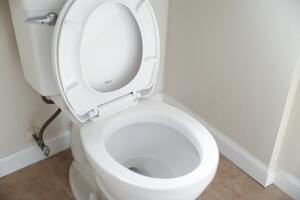An overflowing toilet can be a very unpleasant experience for homeowners to have to deal with. This is especially true if it’s the first toilet overflow situation ever. In addition to the potential health concerns associated with unsanitary water flowing into your bathroom, an overflowing toilet can also cause expensive water damage that can spread to other areas of the home. The good news is there are quick methods of stopping an overflowing toilet before it gets completely out of hand. You can take these steps to help mitigate the potential risks and damages before you call the plumbing professionals.
1. Using a toilet plunger

Grabbing a plunger is probably the first instinct many people have when presented with an overflowing toilet. And in most instances, it is the right one. However, be sure to use the type of plunger that has the rubber rim protruding outwards. A traditional cup plunger may not be able to deliver the desired result. In addition, the plunging process should be repeated several times even if the water is no longer overflowing. One of the potential causes for an overflowing toilet is a clog in the line that could still be there, ready to cause a second overflow the next time someone flushes.
2. Operate the shut-off valve in your toilet
Turning off the water to the toilet may be the first step you take, depending on how quickly the water is rising in the bowl. When an overflow looks likely or is already taking place, look behind the toilet for the pipe that connects it to the wall. This line should include a hand knob or crank that will effectively shut the water off, buying you some time to remove the clog in the appliance and clean up the water near the toilet bowl.
As preventative measures, you should verify that the shut-off valve is working and ensure it’s well-lubricated in case of an emergency. A rusted shut-off valve may require a wrench to operate. And that’s not a problem you want to encounter in the middle of an overflowing toilet situation.
3. Examine the toilet tank
You may need to check the toilet tank if using the toilet plunger has not worked, and the toilet is still overflowing. Find the rubber flapper on the bottom and examine it to see if it’s open. If this is the case, then it should be closed immediately. When the water flow inside the toilet bowl will still not cease, try to see if there is a float ball in the tank and lift it to see if this will stop the overflowing.
Anytime you can’t stop your overflowing toilet, call in the pros. And if you believe you still have a clog in the system, call Pro-Service Plumbing immediately. We can help you tackle the emergency overflow now and ensure you have a seamlessly operating commode.